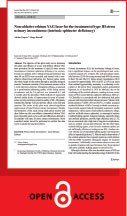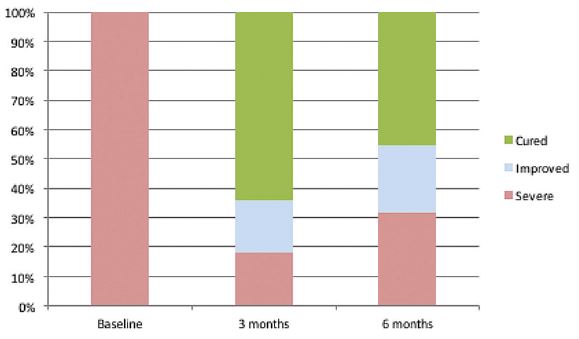Authors: Adrian Gaspar and Hugo Brandi
Published in: Lasers in Medical Science. 2017; 32(3):685-691
1. NEW TREATMENT OPTION FOR TYPE III STRESS URINARY INCONTINENCE (SUI)
This pilot study aimed to determine the safety and efficacy of the IntimaLase® treatment for managing the symptoms of type III stress urinary incontinence (intrinsic sphincter deficiency) in women.
2. METHODOLOGY
Twenty-two patients having diagnosed ISD participated in the study and were treated with the laser throughout the whole length of the urethra through a specially designed cannula. Treatment consisted of two laser sessions with a 3-week interval in-between. Therapeutic efficacy was assessed by the ICIQ-SF questionnaire for determining incontinence severity and quality of life, and the 1-h pad test for objective measure. Patients were followed for 6 months.
3. VERY PROMISING RESULTS
According to the ICIQ-SF questionnaire, 64% of patients were cured and 18% had improved at 3 months post-treatment, while at 6 months 46% were cured and 23% had improved. No change in SUI stage was observed in 18% at 3 months and 32% at 6 months. Importantly, however, even those patients that saw no improvement in their SUI stage had a slight improvement in their absolute ICIQ-UI SF scores. Furthermore, according to the Pad test, clinical improvement was shown in 82% of patients at 3 months and in 50% of patients at 6 months after the treatment.
4. NON-ABLATIVE ER:YAG TECHNOLOGY SEEMS TO WORK ALSO FOR TYPE III SUI
This study suggests that IntimaLase® treatment is a safe and efficacious alternative for patients with type III stress urinary incontinence. Future controlled studies will confirm this data and evaluate the long-term effects.
Patient distribution (in %) based on SUI improvement rates at 3 and 6 months following intraurethral Er:YAG laser treatment




